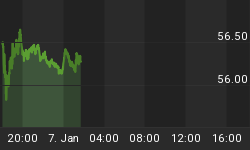After notching a high earlier in the week for this rally that started in March, 2009, the S&P500 went on to lose over 5% in 3 trading days. This puts the S&P500 below the November 13, 2009 closing high. In the short term, "everyone" expects the proverbial bounce giving pause to bulls and bears alike, but make no mistake about it, investors remain poorly positioned to weather a sell off.
And oh for the record, this is what I wrote in the November 15, 2009 commentary on market sentiment:
"Considering the sentiment picture on its own, we can sum up by asking one question: is this the market environment that will take you from here to there? I believe that answer is "no". Markets can always go higher confounding the pundits, but the high odds play according to the sentiment data is that the major equity indices are in a topping process. This implies a trading range at best. There is risk of a down draft as markets "fueled" by the proverbial "liquidity" are prone to quick sell offs. The outlier trade is a market blow off or a spike in prices, and I do not rule this possibility out because of the ongoing downtrend in the Dollar Index. It is possible but it is not the high odds play."
But let's be honest that was then, and here we are now down 5% in 3 days. Furthermore, I contend I didn't do anything smart anyway as we all know a broken clock is right at least twice a day. Right?
Should we expect further down side? According to the sentiment data, the answer is "yes". There is no indication that anything has changed: the "dumb money" remains extremely bullish while the "smart money" and company insiders continue their indifference. The Rydex market timers -i.e., those with a short term time frame - continue to overestimate their ability to get to the exits or identify the top before the next trader. Despite the sell off, these folks are "all in again" expecting a short term bounce. A bounce may develop and statistically it should, but from a longer term perspective, it is still my belief that the next best buying opportunity will occur when the "dumb money" indicator turns bearish (i.e., bull signal). We are a ways from that occurring, but I am sure it will coincide with talk that the the pullback that has started this week has gone on longer and deeper than most would like. In all likelihood, it should get investors to think that the market is rolling over to such a degree that the current cyclical highs will never be revisited.
This is just one man's opinion!
The "Dumb Money" indicator, which is shown in figure 1, looks for extremes in the data from 4 different groups of investors who historically have been wrong on the market: 1) Investor Intelligence; 2) Market Vane; 3) American Association of Individual Investors; and 4) the put call ratio. The "Dumb Money" indicator shows that investors remain extremely bullish.
Figure 1. "Dumb Money" Indicator/ weekly
The "Smart Money" indicator is shown in figure 2. The "smart money" indicator is a composite of the following data: 1) public to specialist short ratio; 2) specialist short to total short ratio; 3) SP100 option traders. The Smart Money indicator is neutral to bearish.
Figure 2. "Smart Money" Indicator/ weekly
Figure 3 is a weekly chart of the S&P500 with the InsiderScore "entire market" value in the lower panel. Due to the start of earnings season, insider trading volumes remain light.
Figure 3. InsiderScore Entire Market/ weekly
Figure 4 is a daily chart of the S&P500 with the amount of assets in the Rydex bullish and leveraged funds versus the amount of assets in the leveraged and bearish funds. Not only do we get to see what direction these market timers think the market will go, but we also get to see how much conviction (i.e., leverage) they have in their beliefs. Typically, we want to bet against the Rydex market timer even though they only represent a small sample of the overall market. As of Friday's close, the assets in the bullish and leveraged funds were greater than the bearish and leveraged by 2.31 to 1, and this ratio is shown in the lower panel. Since the rally began in March, 2009, ratios greater than 2 have tended to mark short term tops.
Figure 4. Rydex Bullish and Leveraged v. Bearish and Leveraged/ daily















